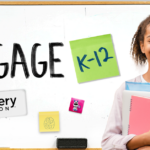Curriculum Associates’ analysis of winter 2021 assessment data reveals steep declines in student proficiency rates compared to historical trends. In majority Black and Latino schools, the percentage of students underprepared for the grade in which they find themselves is growing at twice the rate of majority White schools.
“This analysis quantifies the enormity of the challenge by explaining the breadth of unfinished learning in our schools. It sheds light on the troubling reality that students in schools serving low-income and majority–minority student populations have been disproportionately impacted by the lost in-person instructional time,” says Kristen Huff, vice president of assessment and research at Curriculum Associates and a former senior fellow at the New York Regents Research Fund.
Key findings from the report include:
- This school year, students of color are more likely to be remote than their White peers.
- Majority Black and Latino schools saw the greatest increases in the number of students who are not prepared for the work of their grade in math and reading. For example, in math, the number of underprepared third graders in majority Black and Latino schools saw an increase of 14 percent and 10 percent, respectively, whereas White majority schools saw a comparatively smaller increase of five percent.
- Declines in reading and math proficiency rates are steepest for students in schools in zip codes where the median household income is below $50,000 annually.
- Winter reading proficiency rates are down when compared to historical averages, with especially acute declines in early elementary grades (i.e., Grades 1–3). For example, the percentage of first grade students who were prepared to do grade-level work was 36 percent—a decrease of 10 percent when compared to the historical average.
- Winter math proficiency rates saw even greater declines when compared to historical averages, with losses greater in elementary grades. For example, the number of fourth grade students who were prepared to do grade-level work was 36 percent—a decrease of 16 percent compared to the historical average.
SEE THE DATA HERE
The American Consortium for Equity in Education, publisher of the "Equity & Access" journal, celebrates and connects the educators, associations, community partners and industry leaders who are working to solve problems and create a more equitable environment for historically underserved pre K-12 students throughout the United States.
- American Consortium for Equity in Educationhttps://ace-ed.org/author/admin/
- American Consortium for Equity in Educationhttps://ace-ed.org/author/admin/April 23, 2025
- American Consortium for Equity in Educationhttps://ace-ed.org/author/admin/
- American Consortium for Equity in Educationhttps://ace-ed.org/author/admin/







